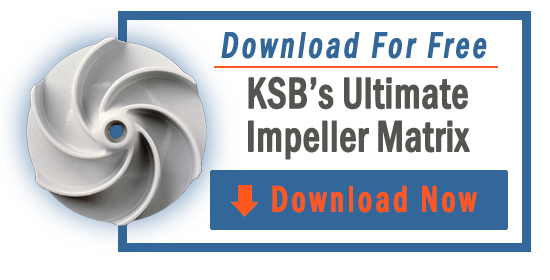When specifying the impeller material for a non-clog sewage pump, how do you know whether to select cast iron or hard iron material?
Usually, a hard iron material is only required if your non-clog pump utilizes a semi-open impeller. A semi-open impeller does not have a shroud on the suction side and rotates against an adjustable suction wear plate, which results in a high amount of wear on the impeller. Semi-open impellers rely on a sharp leading edge to cut material in the wastewater, which allows them to remain clean and help prevent clogging; therefore a hard iron / chromium / nickel alloy is required to keep the semi-open impeller’s leading edge sharp. Without that harder material, the leading edge will dull more quickly, diminishing the pump’s ability to stay free of clogs over a long period of time.
The clearance between the semi-open impeller and the adjustable suction wear plate also plays a critical role in helping to avoid clogging. There is always the possibility of fibrous material in the raw sewage getting caught up between the semi-open impeller and the adjustable suction wear plate if that gap opens; therefore the gap in the semi-open design must be checked and periodically adjusted, which is a maintenance action that is often overlooked.
Using double-shrouded impellers manufactured from cast iron can often provide end users with a more reliable non-clog option. Double-shrouded impellers, also known as enclosed impellers, do not require a sharp leading edge, because they do not cut or run against any wear plate. Therefore, these types of impellers do not have to be manufactured with a harder material. Replaceable wear rings work to protect the cast iron impeller from wear. These wear rings, which can be manufactured in a number of different materials, including hard metals to counter abrasive fluids, work to maintain close tolerances in the pump and do not have to be adjusted. The wear rings can be replaced as they wear, and are typically more cost-effective to replace than a semi-open impeller and suction wear plate.
Whether you are purchasing a new non-clog sewage pump or refurbishing an existing wastewater pump for a raw sewage application, it helps to review the material specifications for the impeller during the pump selection process and get a good understanding of what is truly needed for the application. In most cases, choosing a proven impeller design in cast iron can provide lasting and cost-effective reliability that extends beyond any limited “non-clog” warranties.
KSB offers various impeller options to solve today's wastewater challenges - 
